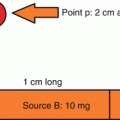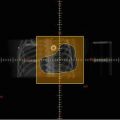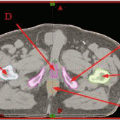(1)
University of Miami Sylvester Cancer Center, Miami, Florida, USA
This part includes (1) the lawful knowledge related to professional work in a health system which applies to nurses, therapists, dosimetrists, medical physicists, and physicians and (2) the essential lawful knowledge of being professional medical dosimetrists. It is useful to understand how the health system works to have a big picture view of why we do what we do and how to do it with the best interest of the patient in mind.
10.1 Working as Professionals at Health System (Questions)
Quiz 1 (Level 2)
1.
Which of the following is the discipline dealing with what is good or bad and right or wrong and moral principles that apply values and judgments to the practice of medicine?
A.
Legal concepts
B.
Ethics
C.
Moral ethics
D.
Fidelity
2.
Beneficence means:
A.
The ethical principle of doing no harm to a patient by a medical professional.
B.
Patients who are independent and have freedom or self-government.
C.
Health-care professionals must act in the best interest of a patient, even at some inconvenience and sacrifice to themselves. The state or quality of being kind, charitable, or beneficial.
D.
The principle of fairness and equity that is maintained for all individuals.
3.
Paternalism is:
A.
Doing what you think is best for the patient, against their will, right, or responsibilities.
B.
Doing what is best for the patient using the patient consent or approval.
C.
Doing harm to the patient without analyzing the consequences.
D.
Making decisions for and not with the patient using the will of a family member.
4.
Which of the following modes identify the caregiver as a scientist dealing only in facts and does not consider the human aspect of the patient?
A.
Priestly model
B.
Contractual model
C.
Collegial model
D.
Analytical model
5.
What does the informed consent involve?
A.
I, II, and III only
B.
I and III only
C.
II and IV only
D.
IV only
E.
All are correct
I.
Every patient is entitled to informed consent before any procedure is performed.
II.
Patients should be informed and educated about their medical facts and the risk involved.
III.
Patients should understand and approve their treatments and participate responsibly in their own care.
IV.
Every patient is entitled to informed consent after any procedure is performed.
6.
When given an informed consent, the patient should be informed of:
A.
I, II, and III only
B.
I and III only
C.
II and IV only
D.
IV only
E.
All are correct
I.
The nature of the procedure, treatment, or disease
II.
The expectation of the recommended treatment and the likelihood of success
III.
Alternative available and probable outcome in absence of treatment
IV.
The risks involved in procedure, treatment, or disease
7.
Which of the following are correct regarding informed consent?
A.
I, II, and III only
B.
I and III only
C.
II and IV only
D.
IV only
E.
All are correct
I.
It is a legal document.
II.
It is entirely the responsibility of the physician.
III.
It must be signed in front of a witness.
IV.
It cannot be delegated to a third party.
8.
Which of the following statements involving competency is not true?
A.
Persons older than 18 years of age that can speak for themselves are considered competent.
B.
Is the quality or condition of being legally qualified to perform an act or the minimum mental, cognitive, or behavioral ability required to assume responsibility.
C.
Persons of age 18 years old or older are considered being competent, if no mental or physical condition is identified.
D.
Persons of age younger than 18 years old are considered minors; therefore they are incompetent and parents or designated guardians must decide for them.
9.
Which of the following statements are true about patient confidentiality?
A.
I, II, and III only
B.
I and III only
C.
II and IV only
D.
IV only
E.
All are correct
I.
Patient information should not be discussed with other departments unless in a direct line of duty.
II.
Conversation about a patient between professionals should be kept in private.
III.
Patient information should not be discussed with families and friends.
IV.
Patient charts and computers with patient information should not be left unattended or unsecure.
10.
Failure to take reasonable care or caution in doing something resulting in unintentional injury to a patient is the definition of:
A.
Malpractice
B.
Negligence
C.
Bad ethics
D.
Liability
11.
Which of the following statements must be met in order for an incident to be considered negligence?
A.
I, II, and III only
B.
I and III only
C.
II and IV only
D.
IV only
E.
All are correct
I.
The plaintiff was owed a duty of care.
II.
There was a dereliction or breach of that duty.
III.
There was a direct injury caused by the breach of that duty.
IV.
There was a proximate cause.
12.
The difference between civil law and tort law is:
A.
Civil law oversees rights between individuals in noncriminal actions, while tort law governs relationship between individuals.
B.
Civil law generally provides for the legal relationships between persons, organizations, and the government, while tort law provides protection to each person from harm not intended to harm society as a whole.
C.
Civil law provides protection to the government and each person from those who would intentionally harm that society (criminal law), while tort law provides protection to each person from harm not intended to harm society as a whole.
D.
The result of violation of a civil law is usually becoming liable to pay for the damages that are caused to the victim, while tort law usually is punished by a fine or imprisonment.
13.
Unlawful physical contact or touching of a person without permission is the definition of:
A.
Assault
B.
False imprisonment
C.
Battery
D.
Invasion of privacy
14.
Which of the following is an example of false imprisonment?
A.
A patient asks a professional about her breast cancer, and the professional starts palpating her breast without her permission.
B.
A patient finished her treatment and wishes to go, but it is not allowed without seeing the doctor.
C.
A professional threatens a patient by showing him/her a 10 gauge needle and states “if you do not allow me to palpate the supraclavicular nodes I have to get a blood sample with this needle,” and the patient feels threatened.
D.
A professional, who is examining a patient without clothes, leaves the room for 30 min, and several nurses enter and leave the room looking for utensils while the patient is exposed.
15.
A false publication, as in writing, print, sign, or pictures, that damages the person’s reputation is the definition of:
A.
Libel
B.
Slander
C.
False imprisonment
D.
Invasion of privacy
16.
Which is the doctrine stating that the thing speaks for itself?
A.
Personal liability
B.
Respondeat superior
C.
Foreseeability
D.
Res ipsa loquitur
17.
Which of the following are correct about an incident report?
A.
I, II, and III only
B.
I and III only
C.
II and IV only
D.
IV only
E.
All are correct
I.
Should be consistent with the institution’s policies and procedures.
II.
Should have the facts of an injury to be valid.
III.
Should contain only facts of the incident concerned.
IV.
A copy of the incident report should be given to the patient involved.
18.
Which of the following are correct regarding medical records?
A.
I, II, and III only
B.
I and III only
C.
II and IV only
D.
IV only
E.
All are correct
I.
Contain a chronological written account of a patient’s examination and treatment that include the patient’s medical history and complaints.
II.
II. Should be maintained in independent departments from hospitals.
III.
Must be signed and written in ink.
IV.
Corrections should never be deleted, but a line should be placed over the incorrect entry and initialed with time and date.
19.
Which of the following is not correct about HIPAA?
A.
HIPAA stands for Health Insurance Portability and Accountability Act.
B.
Makes health care more affordable and accessible for millions of Americans and for those who need its protections and benefits the most.
C.
Broadens the scope of existing fraud and abuse provisions and increases penalties for fraud violations by health-care providers.
D.
Protects privacy of health information.
20.
Which of the following is not correct regarding patient’s bill of rights?
A.
It is a legal document that states a patient’s wishes about medical decisions or names another person to make decisions for him/her.
C.
The patient is always right because he/she is a customer.
B.
It is a document describing the rights of patients and hospital’s responsi-bilities.
D.
The patient has the right to considerate and respectful care.
21.
In order for billing to be valid, which of the following need(s) to be done?
A.
I, II, and III only
B.
I and III only
C.
II and IV only
D.
IV only
E.
All are correct
I.
Signed treatment plan (and DVH if applicable) is required.
II.
MU calculations and/or QA must be signed and dated.
III.
Each treatment device billed must be documented.
IV.
Must be sent to the payee the same day the plan is signed.
22.
Which of the following statements are true?
A.
I, II, and III only
B.
I and III only
C.
II and IV only
D.
IV only
E.
All are correct
I.
Gifts of small values are allowed by the AMA code of ethics.
II.
II. A company who tries to make business with a physician or entity can give cash as a gift.
III.
A physician should support access to medical care for all people.
IV.
Principles adopted by the AMA is a law.
23.
The AAMD board of directors is composed of:
A.
I, II, and III only
B.
I and III only
C.
II and IV only
D.
IV only
E.
All are correct
I.
President, president elect, and past president
II.
II. Membership and recording secretaries
III.
Treasurer
IV.
Twenty regional directors
24.
The mission statement of the AAMD is:
A.
To foster the professional growth of radiologist technologist by expanding knowledge through education, research, and analysis; promoting exceptional leadership and service; and developing the radiology technology community through shared ethics and values.
B.
To advance the science, education, and professional practice of medical physics.
C.
To promote and support the medical dosimetry profession and provide opportunities for education, a forum for professional interaction, and a representative voice in the health-care community while seeking to promote the ideal of professional conduct to which its member should aspire and endorse the highest standard of patient care.
D.
To enhance the quality of practice of medical physics, engage in professional activities for the benefit of the medical physics community, and promote the continuing competence of practitioners in medical physics.
25.
Which of the following organizations is devoted to advance the practice of radiation oncology by disseminating the results of scientific research, promoting excellence in patient care, providing opportunities for educational and professional development of its members, developing policies, and representing radiation oncology in a rapidly evolving socioeconomic health-care environment?
A.
ACR
B.
AAMD
C.
ACMP
D.
ASTRO
26.
What is the mission of MDCB?
A.
To steer the advancement of the medical dosimetry profession by establishing certification and continuing education standards to enhance quality patient care
B.
To elevate standards and advance the cause of medical dosimetry by encouraging its study and improving its practice
C.
To recognize the continuing knowledge and skills of medical dosimetrists
D.
To determine the certification eligibility of medical dosimetrists and conduct examinations to test the cognitive capability of voluntary candidates
27.
Get Clinical Tree app for offline access

The applicant for the MDCB exam can be eligible if:
A.
I, II, and III only
B.
I and III only
C.
II and IV only
D.
IV only
E.
All are correct
I.
Graduated from either a JRCERT-accredited program or a program of at least 12 or 18 months and completed at least 6 months of clinical medical dosimetry experience under the direction of a CMD or medical physicist
II.




Owns a BS degree or holds an ARRT in radiation therapy and completed at least 24 months of clinical medical dosimetry experience under the direction of a CMD or medical physicist and 12 CE approved by the MDCB during his or her 24 months of clinical experience
Stay updated, free articles. Join our Telegram channel

Full access? Get Clinical Tree






